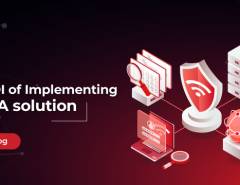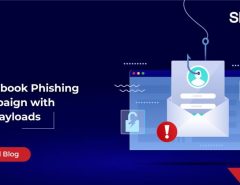We have all heard about the dark web. It’s that mysterious part of the Internet which can’t be accessed normally, which is not indexed on a search engine and contains all the illegal activities that are taking place. Whether its drugs or crime, this is the underworld of the Internet. But what if we tell you that it’s also the hub of something: Malware as a Service (MaaS).
How does MaaS work?
Wait, what? Yes, exactly as it sounds, Malware as a Service (Maas) is a pure business which has its roots in the dark web. Though the term “service” might be a misnomer, it is similar to how “As a service” models like SaaS (Security & Software as a Service), DaaS (Data as a Service) operate. A tangible thing is offered to customers as a service – but while in the other cases, the service offered is positive, in this case, it is different. Malware is offered to those who have money and want to put it to use to jeopardize someone else’s systems. And hence, Malware as a Service (MaaS).
How it operates is simple. Whereas in the past, computer hackers were skilled magicians in the deep dark world of cybersecurity, now anyone can be a hacker. And considering that the cybercrime market is immense and is probably valued in the billions, it’s no wonder why many have turned towards this illegal market. Thousands want their share in the market but not all of them have the technical skills to be successful cyber hackers.
The evolution of MaaS
So the hackers and criminals who are technically strong create or find malware and loopholes and use it against targets, as a service. It’s like a transaction where they are given a project to hack someone by an external party and are paid money to do it.
But that’s only the beginning.
As per analysis of Seqrite’s annual threat report, it is predicted that the evolution of RaaS (Ransomware as a Service) which is a form of MaaS is pointing towards the future possibility of an As a Service model for Advanced Persistent Threats (APTs). What does this mean?
First, some background. The key term to describe APTs is “long-term”. These are long-term, sustained and relentless attacks mounted by hackers and other cyber criminals at one particular target to get sensitive data. The rationale behind APTs is not really causing damage and debilitating an enterprise – rather, it’s craftier. The main aim of APTs is to steal sensitive confidential data. For this reason, they are not hit-and-run, they enter an organizational network, expand their presence slowly and gather data before finally exiting.
APTs: a silent threat
Considering the highly specialized nature of APTs, these are operated by teams of experienced cybercriminals with specific targets: financial institutions, governmental institutions, and military organizations, in effect, places which store lots of confidential data. Even at the global level, governments and states can use APTs to gain espionage over an enemy.
And now as Seqrite’s annual report threat predicts, MaaS could get even more dangerous moving to APT as a service. What this would hypothetically mean is that malware authors could quite likely move to finding generic loopholes in high-profile sectors like health, banking, and cloud. These could then be sold as a well-organized attack vector to those willing to pay. Governments or anti-state actors could take use of APT as a service to get information or infiltrate law enforcement, health departments.
The APT as a Service option is a scary threat for the future of cybersecurity and it is extremely important for all sorts of organizations to invest in robust, secure cybersecurity solutions like Seqrite to protect themselves in these challenging times.
As an IT security partner for your business, Seqrite provides comprehensive security from advanced cyber threats. To know more




